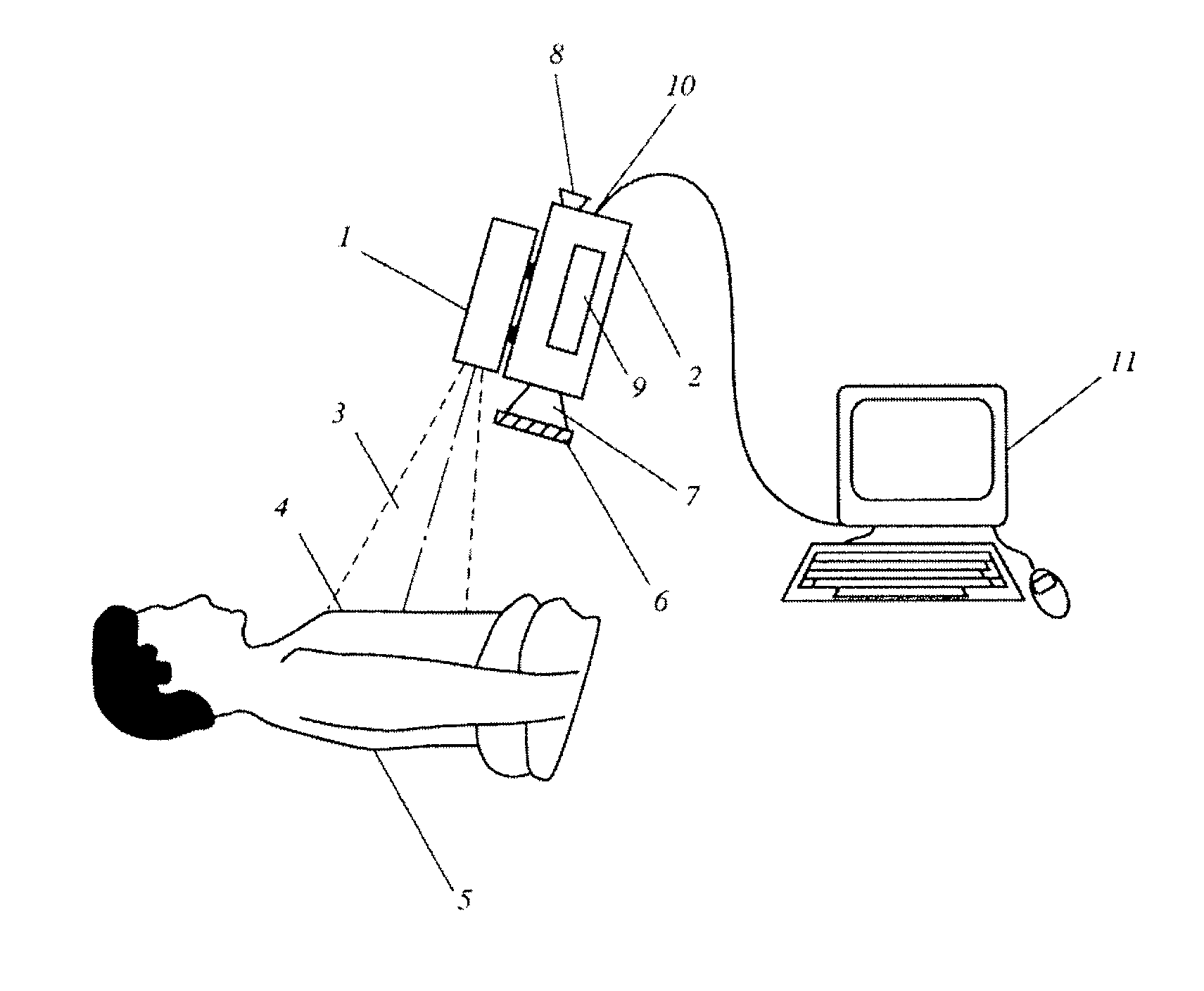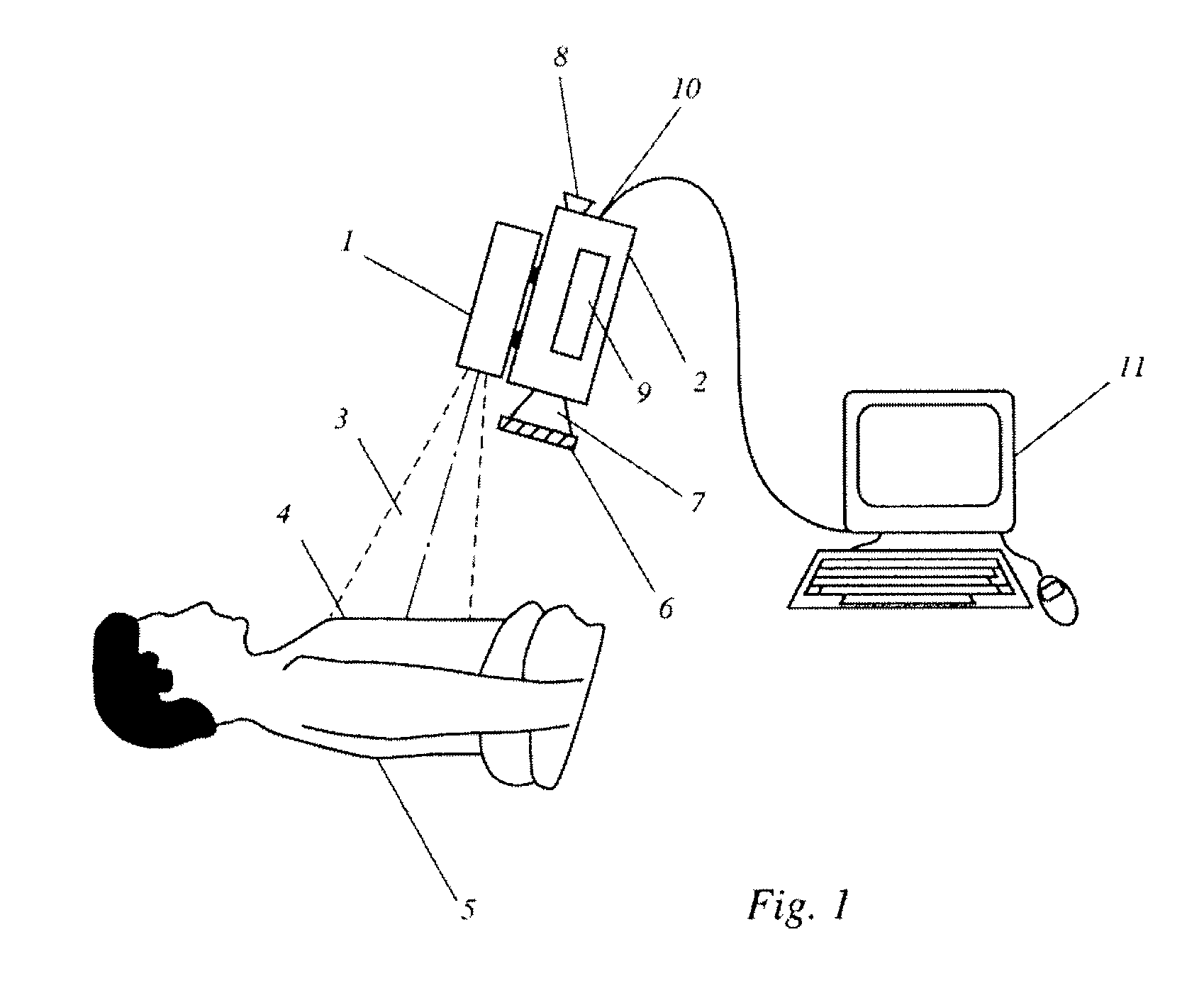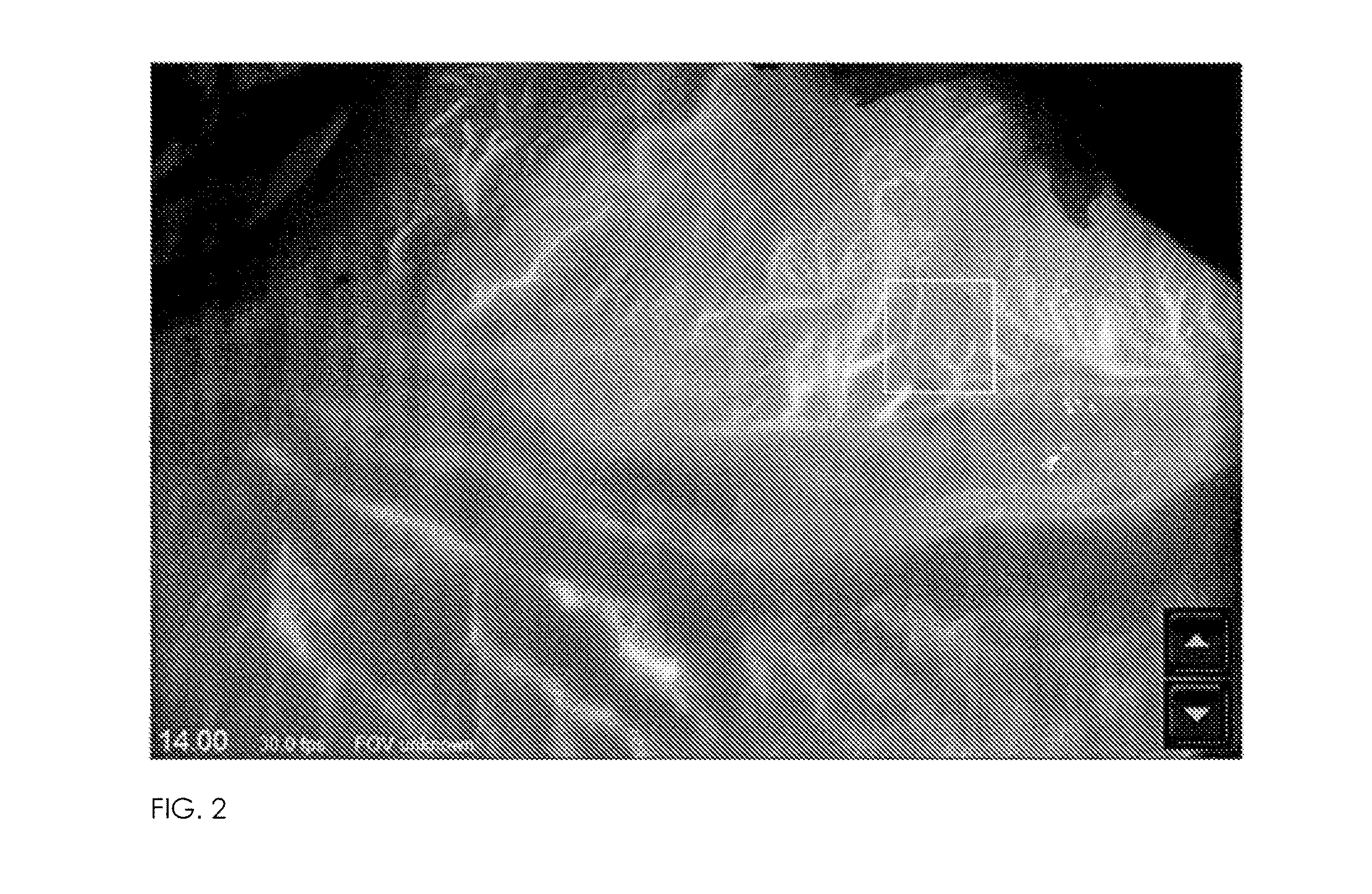Method for evaluating blush in myocardial tissue
a tissue and myocardial technology, applied in image enhancement, instruments, angiography, etc., can solve the problems of the inability to accurately evaluate the inability to accurately assess the intensity of the myocardium, so as to reduce the variance of intensity between pixels, reduce the risk of myocardial infarction, and improve the effect of myocardial perfusion
- Summary
- Abstract
- Description
- Claims
- Application Information
AI Technical Summary
Benefits of technology
Problems solved by technology
Method used
Image
Examples
Embodiment Construction
[0033]FIG. 1 shows schematically a device for non-invasively determining blush of myocardial tissue by ICG fluorescence imaging. An infrared light source, for example, one or more diode lasers or LEOs, with a peak emission of about 780-800 nm for exciting fluorescence in ICG is located inside housing 1. The fluorescence signal is detected by a CCD camera 2 having adequate near-IR sensitivity; such cameras are commercially available from several vendors (Hitachi, Hamamatsu, etc.). The CCD camera 2 may have a viewfinder 8, but the image may also be viewed during the operation on an external monitor which may be part of an electronic image processing and evaluation system 11.
[0034]A light beam 3, which may be a divergent or a scanned beam, emerges from the housing 1 to illuminate an area of interest 4, i.e. the area where the blush of myocardial tissue is to be measured. The area of interest may be about 10 cm×10 cm, but may vary based on surgical requirements and the available illumin...
PUM
 Login to View More
Login to View More Abstract
Description
Claims
Application Information
 Login to View More
Login to View More - R&D
- Intellectual Property
- Life Sciences
- Materials
- Tech Scout
- Unparalleled Data Quality
- Higher Quality Content
- 60% Fewer Hallucinations
Browse by: Latest US Patents, China's latest patents, Technical Efficacy Thesaurus, Application Domain, Technology Topic, Popular Technical Reports.
© 2025 PatSnap. All rights reserved.Legal|Privacy policy|Modern Slavery Act Transparency Statement|Sitemap|About US| Contact US: help@patsnap.com



